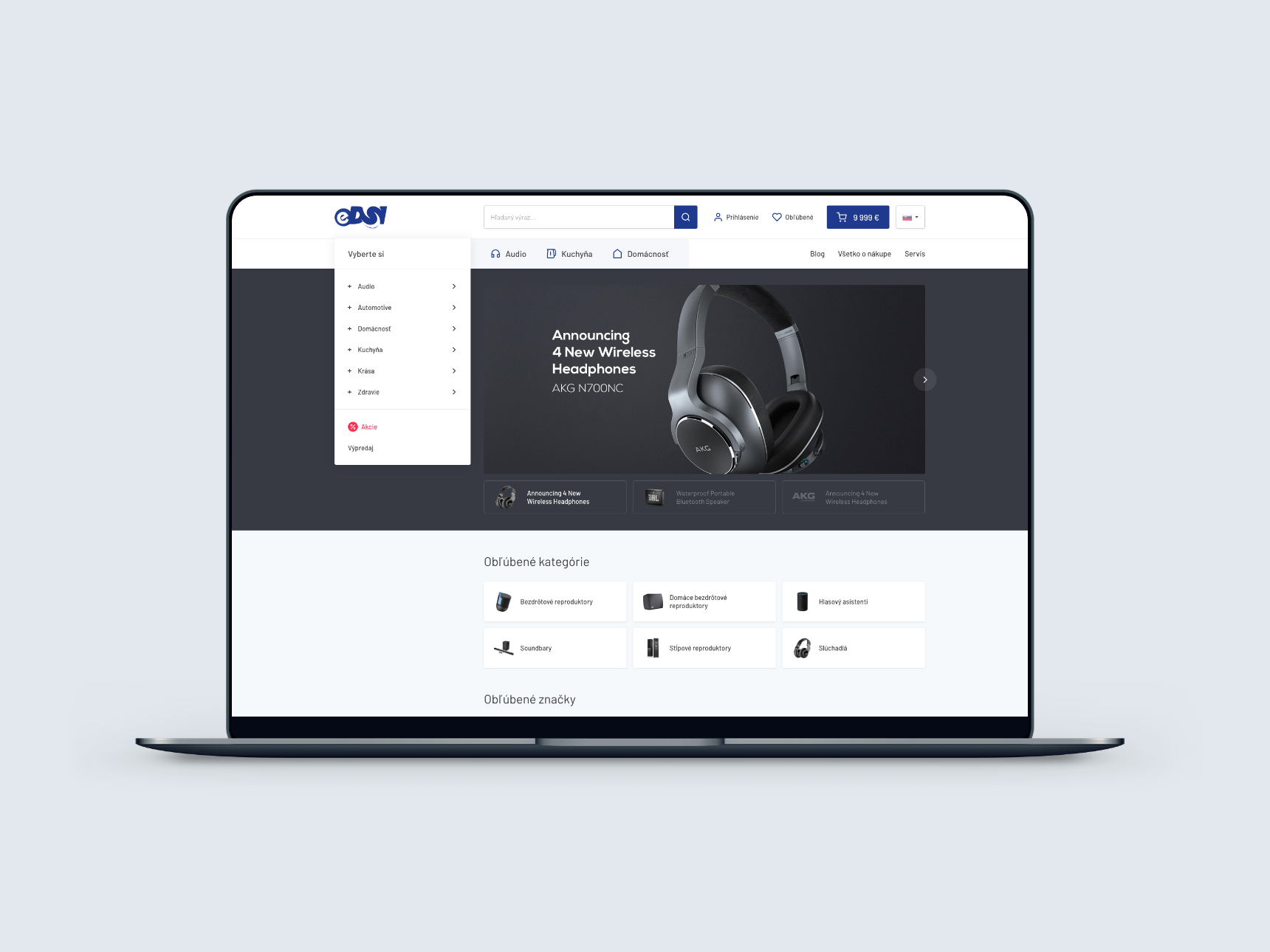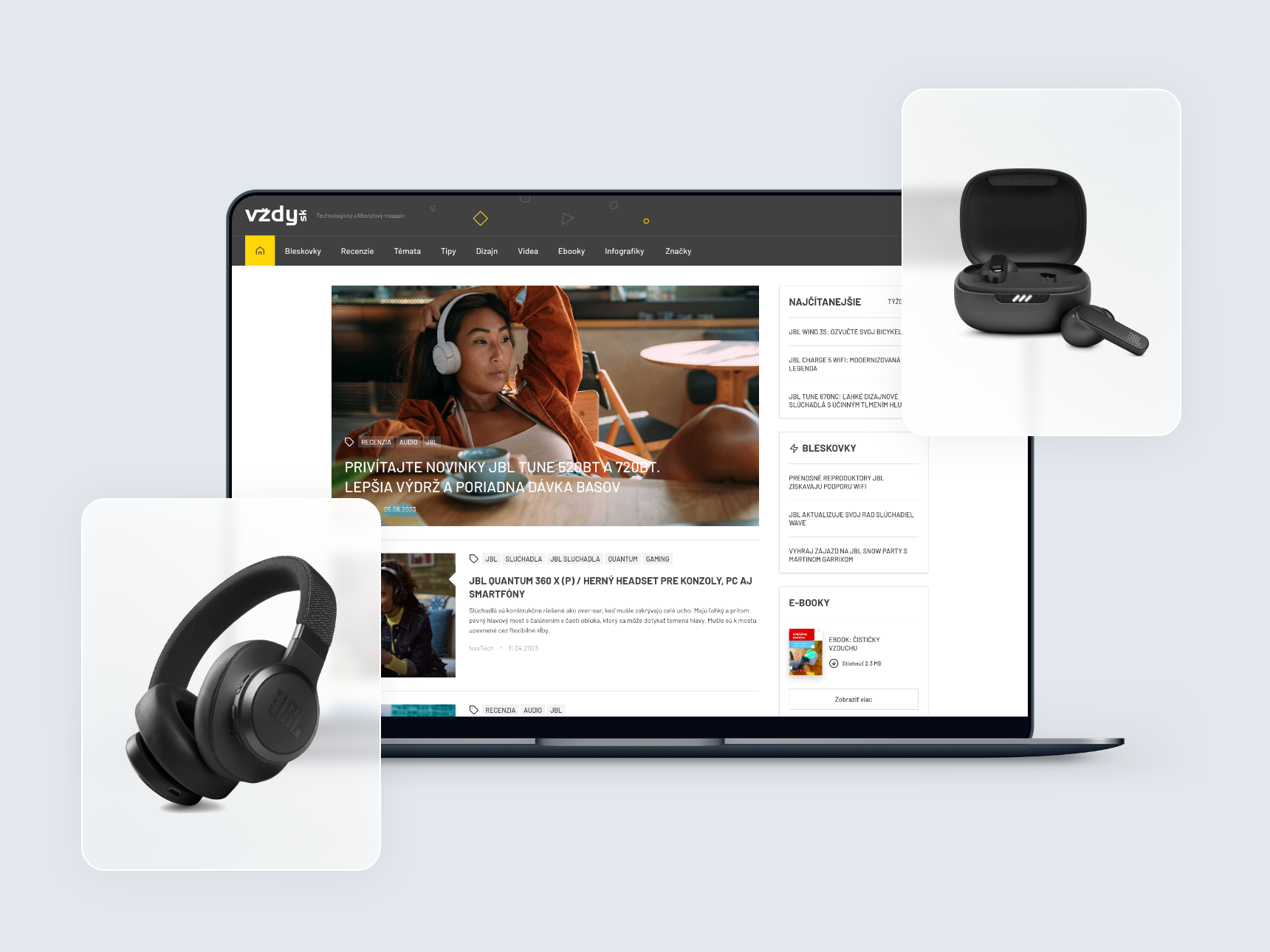What are the key components that power the success of the eDSI multi-shop solution?

In this case study, you'll discover:
Founded in 1993, DSI Slovakia s.r.o. started with TDK audio and video tapes and later expanded to include Kenwood car radios, JBL speakers, and Zelmer home appliances. Today, DSI is the exclusive distributor for 15 international brands and supplies major electronics retailers in Slovakia, including Nay, Datart, Hej, Alza, and Mall.
DSI operates from one central warehouse and offers nearly 2,000 products, along with related accessories. To manage all processes efficiently, the company uses an ERP system. Initially, they worked with NRSYS, but in 2021, they decided to switch to I6 by CyberSoft and integrate it with their new online store.
Throughout the migration from NRSYS to I6, we maintained close communication with the client to ensure data organization in the new system was optimized for easy synchronization with the online store.
This was our first time connecting our online store solution to I6. Thanks to thorough preparation, a well-configured ERP system, and effective communication with the client, we successfully completed the integration in just 60 days.
For the eDSI platform, we developed both the administration and design, with the store initially geared toward B2B customers. To support the sales of specific brands, we later created six additional online stores, each with two language versions, bringing the total to 14 online stores managed from a single administration.
This approach was necessary from a marketing standpoint. Each brand targets a different audience, with separate advertising campaigns and social media profiles. The additional stores focus primarily on B2C customers, many of whom are unaware that DSI is the distributor behind these products. The “independent” online stores allow each brand to showcase its products directly, without confusing the customer with a distributor label. This setup also improves SEO by strengthening keyword relevance tied to each brand.
All online stores are directly connected to I6, allowing product management to take place within the ERP system. DSI’s sales team can manage both wholesale and retail pricing, discounts, and orders, as well as select which products appear on each store. The main store, eDSI, typically displays the entire product range, while the other stores feature only products from their respective brands.
Additional changes, such as product descriptions, images, banners, and brand-specific pages (e.g., About the Brand, Retailers), are managed from the online store’s admin panel. Since the only difference between the stores is the color scheme, navigation is straightforward, making it possible to manage all stores with just two employees.

Since 2013, DSI has published its own online magazine, featuring original articles, product comparisons, expert contributions, and reviews from the world of technology. The magazine has its own Facebook and Instagram profiles, a YouTube channel, and a podcast available on Spotify.
DSI also manages social media profiles for nearly all of its brands, including Facebook and Instagram accounts. JBL has a presence on TikTok as well, along with dedicated social media accounts for the popular JBL Jump Fest event.
Products from the online store are frequently shared across these platforms. To make this process easier, administrators can set meta descriptions for each product, which are automatically displayed when shared on social media. For content like contests, they can also create discount codes and customize their usage conditions.
DSI produces original content for 19 different social media accounts, each targeting a specific audience. With the help of the online store’s functionality, administrators can publish engaging content that, as of July 2023, reaches nearly 40,000 followers across platforms.
From the start, the online store has been primarily designed for B2B customers. Each customer has a unique account, either used directly by the client or by DSI’s sales representatives on behalf of customers. Several key features simplify B2B purchasing:
Each B2B customer has individually negotiated pricing with DSI, which is managed in the I6 ERP system. Once logged in, customers see their specific prices for each product, without the need for manual calculations.
Some DSI products are subject to selective distribution, limiting their availability to specific retailers. These distribution conditions are managed in I6, and only available products are shown to each logged-in customer.
B2B customers have access to a detailed order history and past invoices, which they can download as PDFs.
If a customer orders an out-of-stock product, they can view the expected restock date and estimated shipping timeline.
B2B customers can select from various pre-set shipping addresses. DSI’s sales team sets these up in the I6 system, and customers can choose the most convenient address when placing an order.
B2B customers can generate XML files with various product parameters, which can be uploaded directly into their own online stores. This ensures accurate product information and speeds up the listing process, as minimal manual data entry (such as pricing) is required.
DSI often produces original content, including articles, photos, and videos for their products. B2B customers have access to this exclusive media, which they can download and use on their own websites, social media, or online stores. This helps them effectively present products and provide their customers with all the necessary information to make informed purchasing decisions.
While wholesale customers must register to access the platform, end consumers can shop without an account. The online store offers DSI’s full product range, and consumers can even find discounted or demo products in the “Bazaar” section. Icons highlight special deals, discounted items, and free shipping offers. By following DSI on social media, customers can also take advantage of exclusive discount codes and be the first to know about special gifts with purchase.
The eDSI platform is a prime example of an online store that effectively meets the needs of both B2B and B2C segments. Thanks to its seamless ERP integration, the stores require minimal administrative maintenance, allowing DSI’s team to focus on what they do best—distributing top electronics brands that might otherwise never reach the shelves of Slovak retailers.
We started working with bart in 2020. They created a new online store for us based on our vision, and then we faced the challenging task of switching our ERP, shutting down the old store, and launching the new one. Bart helped us prepare, migrate our data to the new ERP, and integrate it with the new online store. From one store, they then created additional ones for us while maintaining a simple content management system and easy product publishing. Now we’re preparing to add more sites, this time for brand support rather than direct sales. Thanks to all these steps, we have a strong marketing presence and continue to maintain our leadership in the electronics market.
